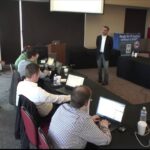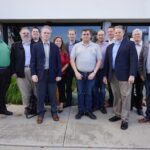|
|

Dheeraj Pandey presented for Nutanix at SFD2 |

This video is part of the appearance, “Nutanix Presents at Storage Field Day 2“. It was recorded as part of Storage Field Day 2 at 10:30-12:30 on November 9, 2012.
Watch on YouTube
Watch on Vimeo
The presentation by Dheeraj Pandey, CEO and co-founder of Nutanix, at Tech Field Day 2 on November 9, 2012, provided a comprehensive overview of Nutanix and its business updates. The session began with Howard Ting, VP of Marketing, introducing the company and highlighting the experienced team assembled from top tech companies like Oracle, Google, VMware, and Palo Alto Networks. Nutanix, founded in 2009, has been selling its solutions for about a year and is backed by prominent venture capital firms such as Lightspeed, Battery, COSLA, and Goldman. The company focuses on leveraging the channel for distribution and emphasizes that its core intellectual property lies in software, delivered through a hardware form factor. Ting also mentioned that the presentation would include sneak peeks into unannounced features, encouraging attendees to write about them.
Dheeraj Pandey then delved into the technological evolution over the past decade, particularly the shift towards converging compute and storage, a concept pioneered by tech giants like Google, Facebook, and Amazon. This approach led to the creation of scalable, flat data centers where compute and storage resources are integrated into the same machines, eliminating the need for traditional storage area networks (SANs). Pandey highlighted VMware’s recent alignment with this vision, as evidenced by their acquisition of Nicera and their push towards software-defined data centers. This paradigm shift envisions enterprise data centers as homogeneous, symmetric environments where all services, including applications, storage, networking, and security, run on commodity servers. Nutanix’s vision aligns with this trend, aiming to bring the benefits of cloud data centers to enterprise environments.
Pandey further explained the concept of convergence and its implications for data center architecture. True convergence, according to Nutanix, involves integrating compute, storage, and other services into a homogeneous set of machines, rather than merely bolting together existing systems. This approach allows for independent scaling of compute and storage, with storage controllers running as virtual entities rather than on bare metal. This flexibility enables late binding of features, allowing administrators to assign policies at the virtual machine level rather than being constrained by hardware configurations. Nutanix’s architecture supports dynamic, self-learning systems that adapt to data access patterns, optimizing performance and resource utilization. The presentation concluded with a discussion on the benefits of hyperconvergence, including cost savings, incremental scalability, and the elimination of silos, positioning Nutanix as a leader in the software-defined data center space.
See also:
Personnel: Dheeraj Pandey








